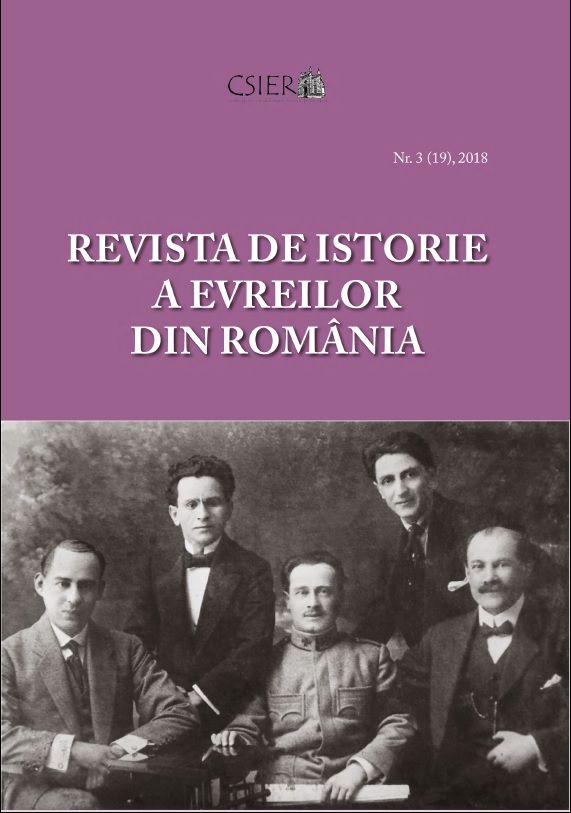Diversitate în unitate, unitate în diversitate: rabini,șef-rabinat și curente religioase în obștea evreiască din România interbelică
Diversity in Unity, Unity in Diversity: Rabbis, Chief Rabbinate and Religious Trends of the Jewish Community in Interwar Romania
Author(s): Lucian-Zeev HerșcoviciSubject(s): Cultural history, Anthology, Comparative history, History of ideas, Local History / Microhistory, Jewish Thought and Philosophy, History of Judaism
Published by: Editura Hasefer
Keywords: religious diversity; Mosaic Faith; Chief-Rabbi; sefardim; askenazim; synagogue;
Summary/Abstract: This article aims to answer a few specific questions about the situation of social and religious life of the Romanian Jews in the interwar period. How was the Mosaic Faith organized in Romania during this period? How did religious diversity and the diversity of Jewish traditions in the provinces of interwar Romania influence organization of their spiritual and religious life, given the new framework? Was there a link between the emancipation of Romanian Jewry and the reorganization of their religious life? What were the main Jewish religious movements in interwar Romania? Was there a mutual influence between Jews in the various Romanian provinces, in the field of communal and religious life, in terms of the Chalacha, as well as of the emergence and development of various philosophical-religious currents of Judaism? Let me mention a few elements meant to provide a general answer to these questions: the diversity of regional and historical traditions, as well as the presence of different religious and cultural traditions among the Jews in the various Romanian provinces; a change in the status of the Jews, both individually and collectively, within the Romanian state; the reorganization of communal and religious life; contacts between casuistic rabbis from different provinces; the mutual influence in the field of Torah study and in publishing Hebrew books. One aspect I will refer to is that of the colliding tendencies between the followers of the various trends, as well as the collisions of interests between the followers of centralism and the followers of religious pluralism. I need to mention that the interwar period was the age of maximum development of the Romanian Jewry, both in terms of demography and level of integration, as well as in terms of philosophical-religious thinking and religious practice. Due to these aspects, I believe one can refer to a certain diversity in unity and to a unity in diversity, as far as the Romanian Jewry in the interwar period is concerned. This issue sparked controversy among the followers of various Jewish currents and tendencies within the community at the time, as well as later, between historians of Judaism and apologists belonging to different religious currents and political tendencies. Another aspect is the fact that the Romanian Jewry had been given citizenship, which meant they now faced different issues from those of the previous period. One such issue was the official acknowledgement of the Mosaic Faith, its right to have a representative in the Romanian Senate, just like all other religious groups, and the state’s obligation to subsidize it proportionally with the number of its members. This was one of the claims of the Union of the Local Jews, which later became the Union of Romanian Jews. Its main leader, Dr. Wilhelm Filderman, acknowledged the existence of linguistic differences between the Jews living in the various provinces of Romania. While recognizing the religious differences with regard to the Jews in Transylvania, he wanted to present the Mosaic Faith as a unitary organization, before the authorities, asserting the religious unity of the Jews and of Judaism, based on the Chalachic rules of the Shulchan Arukh religious codex. He considered that religious differences were only an internal matter, while the mosaic faith was unitary, and he gained the support of the Liberal Party, that shared this view. Unlike the Liberal Party, the National Party of Transylvania, which later became the National Peasants’ Party, supported the idea of pluralism, with different mosaic denominations.
Journal: Revista de Istorie a Evreilor din Romania
- Issue Year: 2018
- Issue No: 3 (19)
- Page Range: 123-199
- Page Count: 77
- Language: Romanian
- Content File-PDF

